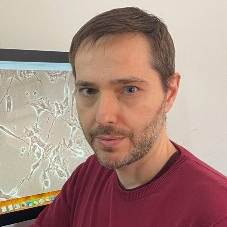Liver Constituent Cells: Their Niche, Close Intercellular Relationship and Crosstalk with the Extracellular Environment—Current and Future Perspectives (2nd Edition)
A special issue of Cells (ISSN 2073-4409).
Deadline for manuscript submissions: 10 June 2024 | Viewed by 86
Special Issue Editors
2. Research Center for Nanotechnology for Engineering of Sapienza (CNIS), Sapienza University of Rome, Rome, Italy
Interests: nutrients; nutrition; neurogenesis; neurodegeneration; aging; nutraceuticals; rare diseases; brain homeostasis; microbione; gut–brain axis
Special Issues, Collections and Topics in MDPI journals
Interests: cirrhosis and liver failure; apoptosis; liver cancer; retinoids; hepatic stellate cells; clinical and public health nutrition; inflammation
Special Issues, Collections and Topics in MDPI journals
Special Issue Information
Dear Colleagues,
This is the expanded second edition of Special Issue “Liver Constituent Cells: Their Niche, Close Intercellular Relationship and Crosstalk with the Extracellular Environment—Current and Future Perspectives” that 1st edition was very successful with 9 papers published.
The liver is complex anatomy-wise and comprises different specialised cell types. Within the hepatic parenchyma, mainly formed by hepatocytes, it is possible to identify a liver microcirculatory milieu composed of liver sinusoidal endothelial cells (LSECs), hepatic stellate cells (HSCs) and resident macrophages (Kupffer cells). Also present in the hepatic parenchyma are biliary ductules made up of cholangiocytes. Sinusoids, hepatocytes and biliary ductules are anatomically similar, and the extracellular matrix takes part not only in spatial arrangement but also in cellular crosstalk. The 3D structure, together with the composition of the extracellular matrix and the cell behaviour, is strictly involved in the liver’s physiological and pathophysiological processes. For example, the cause-and-effect relationships between the different liver cells and the exact timing that leads to CLDs still remain unclear. The capillarisation observed in the pathophysiology of non-alcoholic steatohepatitis was previously thought to follow the onset of hepatic inflammation; however, the current view holds that it occurs prior to inflammation. Furthermore, changes in the sinusoids and the perisinusoidal space (also known as the Disse space) in chronic liver diseases (CLDs) prevent drug delivery to the hepatic parenchyma, highlighting the urgent need to develop new effective pharmaceutical formulations.
The second edition of this Special Issue aims to report both the most recent findings and current opinions on the biological constituents of the liver, their niche, and the close intercellular relationship and crosstalk at anatomical and cell molecular levels in both health and disease. Priority will be given to research on the biological barriers formed during liver disease, their description and the therapeutic approaches to overcome them.
Both comprehensive reviews (more than 4000 words in the main text) and original articles are welcome.
Dr. Marco Fidaleo
Dr. Fausto Andreola
Guest Editors
Manuscript Submission Information
Manuscripts should be submitted online at www.mdpi.com by registering and logging in to this website. Once you are registered, click here to go to the submission form. Manuscripts can be submitted until the deadline. All submissions that pass pre-check are peer-reviewed. Accepted papers will be published continuously in the journal (as soon as accepted) and will be listed together on the special issue website. Research articles, review articles as well as short communications are invited. For planned papers, a title and short abstract (about 100 words) can be sent to the Editorial Office for announcement on this website.
Submitted manuscripts should not have been published previously, nor be under consideration for publication elsewhere (except conference proceedings papers). All manuscripts are thoroughly refereed through a single-blind peer-review process. A guide for authors and other relevant information for submission of manuscripts is available on the Instructions for Authors page. Cells is an international peer-reviewed open access semimonthly journal published by MDPI.
Please visit the Instructions for Authors page before submitting a manuscript. The Article Processing Charge (APC) for publication in this open access journal is 2700 CHF (Swiss Francs). Submitted papers should be well formatted and use good English. Authors may use MDPI's English editing service prior to publication or during author revisions.
Keywords
- chronic liver diseases
- liver microcirculatory milieu
- liver sinusoidal endothelial cells (LSECs)
- hepatic stellate cells (HSCs)
- Kupffer cells
- hepatocytes
- cholangiocytes
- sinusoid capillarization
- Disse space







